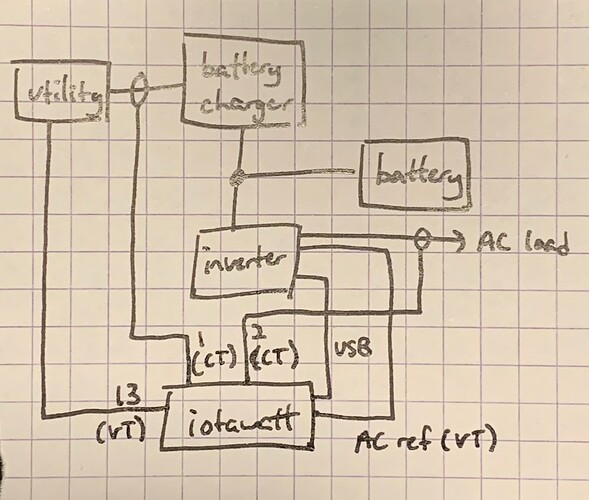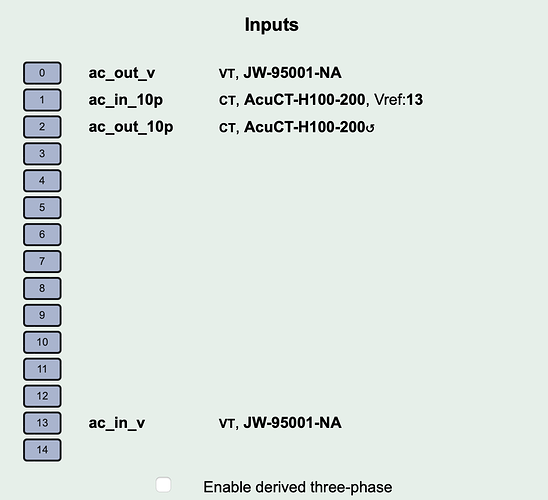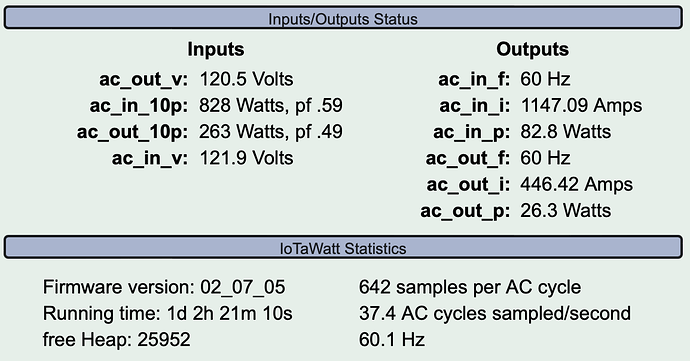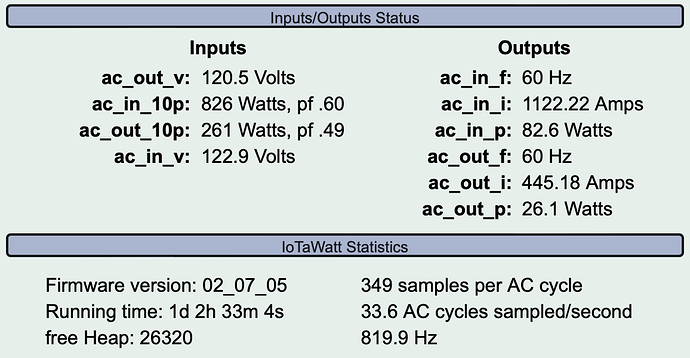I have an IotaWatt set up as part of a homemade double conversion UPS and redundant DC power supply. (Battery charger, battery, and inverter are all in parallel with some loads connected to the inverter and some loads powered by DC in the middle.) I have two VTs: one connected to input (utility) power and one connected to output (inverter) power. The 9V AC REF port is connected to inverter power (because it is redundant), and the utility VT is connected to port 13. I am pulling metrics from IotaWatt using custom monitoring software via the HTTP API.
Normally, this setup works great, but if I cut input power, the loss of power to that VT causes IotaWatt to slowly (but not instantly) grind to an almost complete halt. It works okay for about two minutes, reporting input power as zero volts, but then it starts returning nulls for everything, even if I query only metrics associated with the other, still-powered VT. Eventually, everything goes to zero in the IotaWatt interface, and it even loses the ability to display data about the logs in the “Data Logs” section of its status page, which becomes totally empty. Rebooting the device does nothing.
Oddly, under “IotaWatt Statistics,” the device displays some crazy frequency, like 800 or 1300 Hz while in this condition, even though its primary VT is still powered and fine.
This condition persists until I restore power to the VT. If I then look at the graph interface, I see no data points at all during the period when the single VT was unpowered.
Is there any way to fix or work around this issue? I was hoping I could monitor both sources of AC independently, but the device seems to be freaking out totally at the loss of only one.






